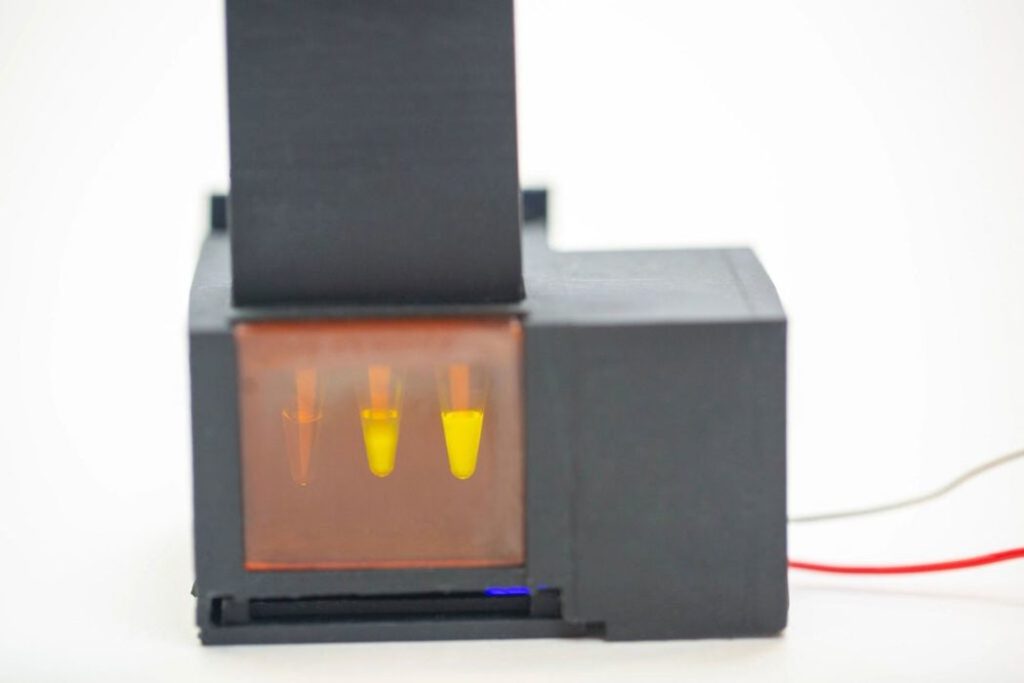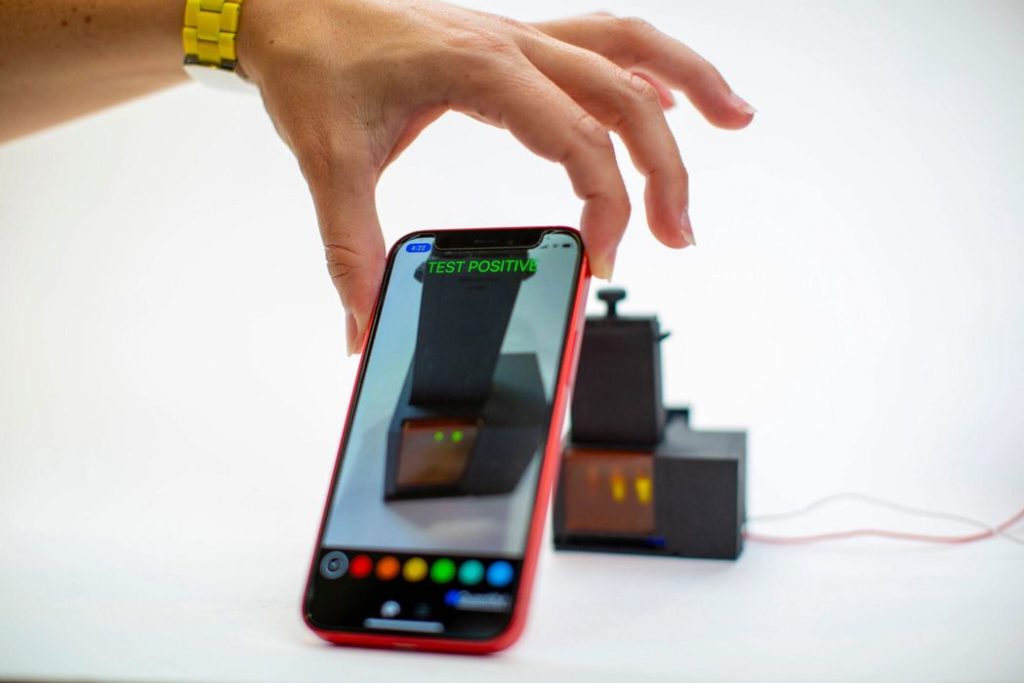
Researchers at Harvard and MIT have developed a 3D printed test device to detect the virus that causes COVID-19.
The device’s official name is the “Minimally Instrumented SHERLOCK”, or “miSHERLOCK”.
Wait, what’s “SHERLOCK”? It is a CRISPR-cas diagnostic platform protocol that was previously designed to detect nucleic acids in a rapid manner. For this application, the nucleic acids being detected are for the virus variants that cause COVID-19.
The miSHERLOCK device is quite amazing. It accepts only human saliva as input, and processes it using heat to isolate the relevant compounds. The sample is transferred to a second chamber where it undergoes a reaction with chemicals designed to detect specific SARS-CoV-2 variants.
The results of the test are displayed using a smartphone app.

miSHERLOCK uses chemical “pellets” for detection, and it is therefore possible to rapidly adapt the testing for any new variants that emerge, simply by changing to a new type of pellet.
As you can see in the image at top, the battery-powered miSHERLOCK is a rather small device that is eminently portable.
The entire process from sample to result takes less than a single hour, and is said to be at least as accurate as today’s PCR tests.
If that’s not amazing enough, the miSHERLOCK device itself can be produced for only US$15, and repeated tests cost only US$6 each.
That is a very low cost for detection of COVID-19, and should make testing available to far more people worldwide. The fact that the device is portable means it can be easily carried into any region for use. That could dramatically reduce the need for patients to travel to a central testing site, which in some cases might not be possible.
The fact that miSHERLOCK is 3D printable means that it can be electronically transmitted far and wide to reach, well, everywhere. This is a very good example of how distributed digital manufacturing with 3D printers can greatly assist with a complex problem.
Everything about this design adds to the ability to expand testing in challenging regions:
- Easily 3D printed anywhere
- Comfortable saliva sample approach
- Low cost
- Reusable
- Inexpensive
- Portable
- Usable at point of contact
By combining CRISPR technology with a unique 3D printable design, the researchers have come up with a practical solution to a very difficult problem. While some countries have slowed the pandemic through vaccination and other programs, vast areas of the world are still undergoing enormous challenges and could benefit from inexpensive test equipment such as miSHERLOCK.
This device is definitely a product of our age: consider how this problem might have been solved years ago, when there wasn’t CRISPR or 3D printing technologies available. I think you may have come up with the same answer I did: it wouldn’t have been possible.
